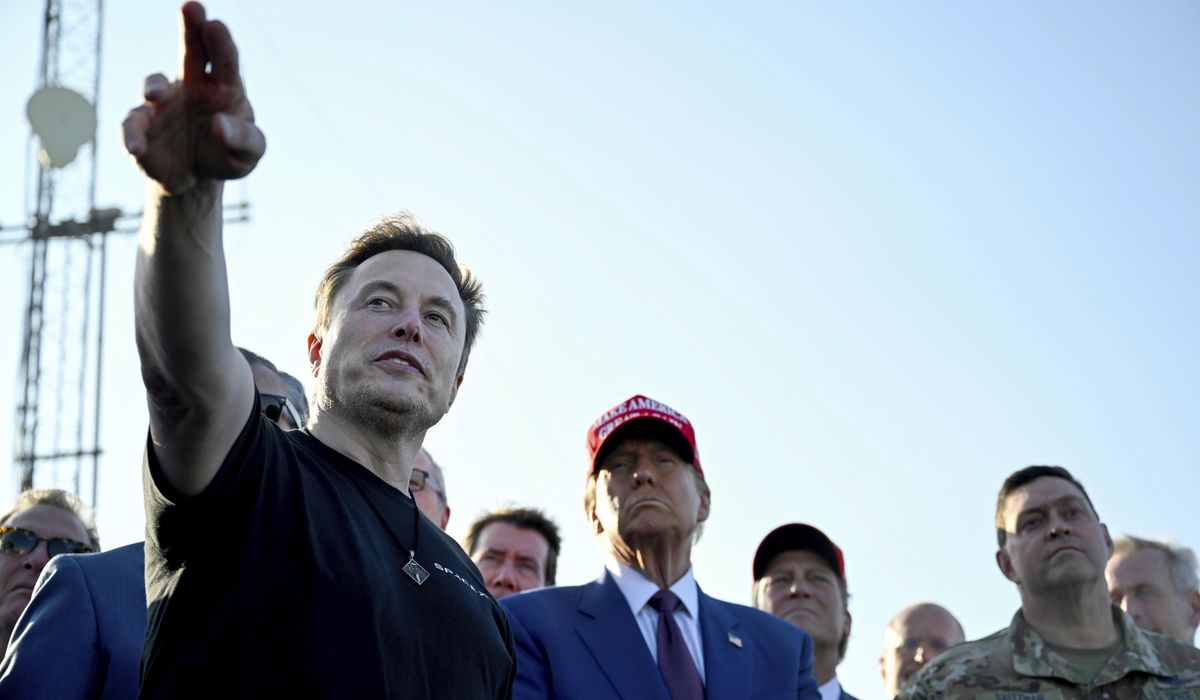


Dozens of inspectors general toil away in federal agencies every day, spotting waste, mismanagement and just plain bad decision-making, all of which ends up in dry reports that collect dust in government archives.
They may now provide a blueprint for President-elect Donald Trump’s Department of Government Efficiency, the commission to be run by Elon Musk and Vivek Ramaswamy and tasked with slashing hundreds of billions of dollars from the federal budget.
“You’re going to have a situation where Elon Musk and his investigators start with a library of known government documents on government failures,” said Grover Norquist, president of the conservative Americans for Tax Reform. “There’s a lot of stuff out there that simply needs to see the light of day.”
There are more than 70 IGs, as they’re known in Washington, and these watchdogs cover government agencies big and small. The Defense Department has one, as does the Defense Intelligence Agency. The Treasury Department has one catch-all and one specifically for the IRS. There are taxpayer-funded watchdogs for Social Security, the Postal Service and the Corporation for Public Broadcasting.
There’s also the Government Accountability Office, run by the comptroller general. This is Congress’s chief investigative agency and, like the IGs, writes massive reports detailing ways to improve government operations.
Sometimes, the federal agencies act on the cost-saving recommendations on their own. Sometimes they promise to do so, but don’t follow through. And sometimes, they ignore the recommendations altogether.
The umbrella group for the IGs says there are 13,560 unfulfilled recommendations government-wide, including several thousand that have been open for more than five years. The GAO counts 5,386 open recommendations, of which 494 are classified as “priority recommendations.”
Douglas Holtz-Eakin, a former director of the Congressional Budget Office, said they’ll all get a look, but that may not mean much.
“I think there’s every reason to believe that DOGE will scrub every IG report and use that as fodder for the advice they’re going to give,” said Mr. Holtz-Eakin, now president of the American Action Forum, a center-right think tank for economic and fiscal policy. “Does that mean anything will happen? No, not necessarily.”
He said the politics of lawmakers protecting their turf and the inertia at federal agencies — the ones already ignoring the reports — will be tough to overcome.
“A lot of them are like, ‘OK, this program is duplicative and wasteful, and yet that is my program, and I am going to run my reelection race on having gotten that into a bill,’” he said. “So they are not going to take it out. They are going to defend it.”
Sen. Joni Ernst, head of the Senate DOGE Caucus, said the IG reports are invaluable in exposing “waste, fraud, and abuse in every corner of the federal government.”
“This long list of ways to trim the fat and fix the broken and bloated bureaucratic state would not be possible without inspector general reports uncovering taxpayer-funded boondoggles beyond your wildest imagination,” said the Iowa Republican.
Ms. Ernst relied heavily on the reports when she sent Mr. Musk and Mr. Ramaswamy a list of a trillion dollars worth of suggestions on where to trim government fat and reduce the government’s annual deficits.
Her letter pointed to inspector general reports that showed:
• At least 149,000 federal civilian employees in 2021 owed a total of $1.5 billion in unpaid taxes.
• The Biden administration potentially doled out an estimated $200 billion in taxpayer-funded COVID relief to fraudsters.
• A GAO report showed the federal government in 2016 spent $1.5 billion on public relations efforts.
Ms. Ernst also relied on IG’s findings in her recent report detailing how federal employees abuse their telework privileges and how the federal government is wasting billions of dollars on federal buildings that sit nearly empty.
“Bureaucrats have been found in a bubble bath, on the golf course, running their own business, and even getting busted doing crime while on taxpayers’ time,” the report said.
Mr. Musk, the world’s richest man who has taken a liking to highlighting IG and GAO reports, took it from there, telling his 207 million followers on his social media platform, X, that “if you exclude security guards and maintenance personnel, the number of government workers who show up in person and do 40 hours of work a week is closer to 1%!”
It also sparked a backlash from the nation’s largest federal employee union. The American Federation of Government Employees, representing 800,000 federal employees, challenged the findings, saying Ms. Ernst exaggerated the number of federal employees who telework.
Ms. Ernst’s office has not repeated Mr. Musk’s 1% claim. Still, she countered that the AFGE argument was bogus because its calculation included federal employees — including TSA and Border Patrol agents — who must show up in person to carry out their work.
• Seth McLaughlin can be reached at smclaughlin@washingtontimes.com.
